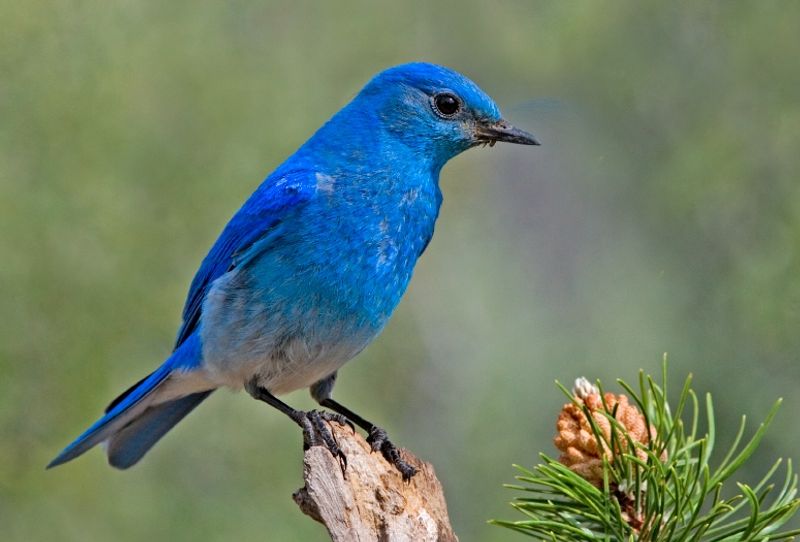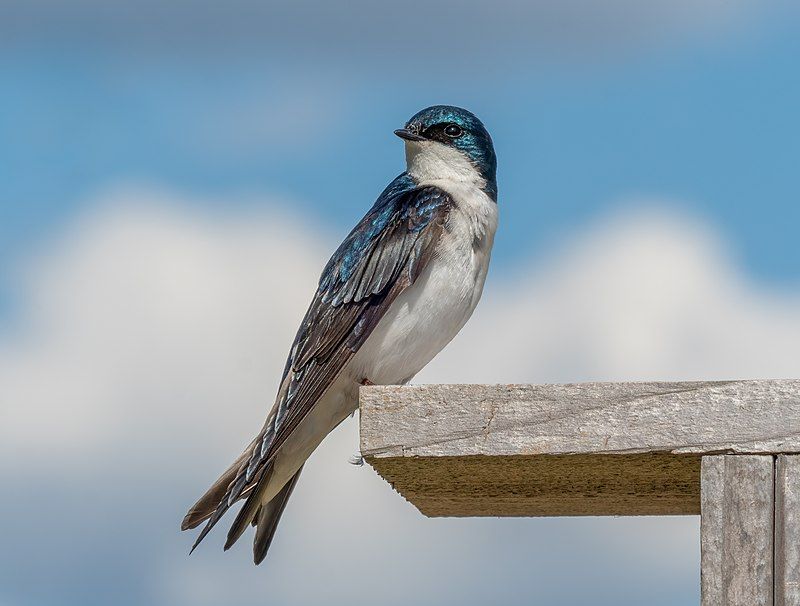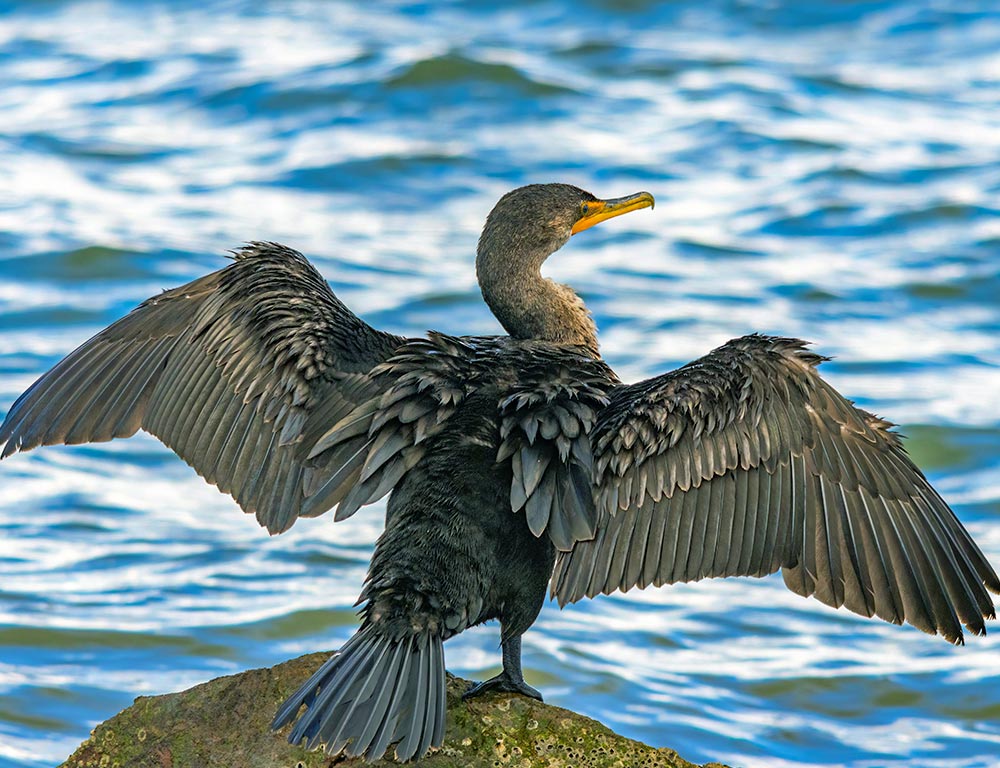Welcome to the world of bluebirds in Northern California! A stunningly beautiful sight to behold, bluebirds are a common sight in the Northern California region.
This region is home to a variety of bluebird species, including the Mountain Bluebird, Western Bluebird, Steller’s Jay, and American Robin.
While not all blue birds are native to the region, they have become a permanent part of the local ecosystem and are often seen in the area’s parks, meadows, and forests. These birds have a unique and captivating beauty that attracts birdwatchers and nature lovers alike.
Whether you’re looking for a casual sighting or a more in-depth observation, Northern California has plenty to offer.
1. Western Bluebird

The western bluebird is a species of bird native to North America. It is classified as a thrush, a group of songbirds known for their melodious songs. They are small birds, measuring around 12.5 centimeters in length, and weighing anywhere from 20 to 28 grams.
Their wingspan is typically between 22 and 28 centimeters. They are sexually dimorphic, meaning males and females have different physical features. Male western bluebirds have bright blue backs, wings, and tails, while females usually have a grayish-brown coloration.
Both sexes have rust-colored chests. Western bluebirds are found mainly in the western United States, from the Rocky Mountains to the Pacific coast. They prefer open woodlands or meadows, but can also be found in parks and gardens.
They feed mainly on insects, but can also eat fruits, berries, and seeds. They build their nests in tree cavities or nest boxes provided by humans. During the breeding season, they form monogamous pairs and lay up to five eggs.
Both parents help nurture the chicks until they are ready to fledge. The western bluebird is an important species in its ecosystem, helping to control insect populations and dispersing seeds for plant regeneration.
They are also a popular subject among birdwatchers, who enjoy watching them sing their beautiful songs.
Although their numbers have decreased due to habitat destruction and competition from non-native species, their populations are slowly recovering, thanks to conservation efforts.
| Kingdom | Animalia |
| Phylum | Chordata |
| Class | Aves |
| Order | Passeriformes |
| Family | Turdidae |
| Genus | Sialia |
| Species | S. mexicana |
2. Mountain Bluebird

The mountain bluebird is a small thrush that migrates throughout western North America. It can be found in mountainous regions, where it is known for its beautiful bright turquoise-blue coloring.
The adult males have thin bills and are lighter underneath, while the underside of all mountain bluebirds is lighter in color. They also have black eyes, which contrast nicely with their bright feathers.
The mountain bluebird is a spectacular sight to behold and can bring a sense of beauty to even the most rugged of mountain landscapes.
| Kingdom | Animalia |
| Phylum | Chordata |
| Class | Aves |
| Order | Passeriformes |
| Family | Turdidae |
| Genus | Sialia |
| Species | S. currucoides |
3. Tree Swallow

The tree swallow is a species of migratory bird that falls under the family of Hirundinidae. This species is found primarily in the Americas and was first documented by French ornithologist Louis Vieillot in 1807 under the name of Hirundo bicolor.
However, since then, the tree swallow has been moved to a different genus, Tachycineta, which has caused some debate amongst scientists over its exact phylogenetic placement.
This species has a wide range of habitats which include woodlands, grasslands, and coastal areas, and feeds primarily on insects that it catches in flight. The tree swallow has a unique appearance, with its body being mostly grey with a white belly and a light blue throat.
Its wings are brown and its tail is forked, both of which help it to maneuver through the air with ease. The tree swallow is an important species due to its ability to control insect populations, as well as its beauty which has made it a popular bird for birdwatchers.
| Kingdom | Animalia |
| Phylum | Chordata |
| Class | Aves |
| Order | Passeriformes |
| Family | Hirundinidae |
| Genus | Tachycineta |
| Species | T. bicolor |
4. Double-Crested Cormorant

The double-crested cormorant is a species of water bird belonging to the cormorant family of birds. It is one of the most widespread species of cormorants, found in both coastal and inland areas across North America from Alaska to Mexico.
The double-crested cormorant prefers to inhabit areas near rivers, lakes, and other bodies of water. This bird is capable of adapting to a variety of habitats, from the Aleutian Islands in Alaska to the warm waters of Florida and Mexico.
Double-crested cormorants are often seen perched on rocks, logs, or branches near the water’s edge. They are also proficient swimmers, using their webbed feet to propel themselves through the water in search of food.
These birds have a wide range of prey, including fish, amphibians, and crustaceans. The double-crested cormorant is a valuable species that helps to maintain the balance of aquatic ecosystems.
| Kingdom | Animalia |
| Phylum | Chordata |
| Class | Aves |
| Order | Suliformes |
| Family | Phalacrocoracidae |
| Genus | Nannopterum |
| Species | N. auritum |
Conclusion
Bluebirds are a common sight in northern California, and they are a great addition to the rich and diverse wildlife found in the region. They are generally found in open woodlands, but can also be spotted in city parks and gardens.
Bluebirds are a wonderful reminder of the beauty of nature, and a reminder of the importance of preserving our natural habitats.